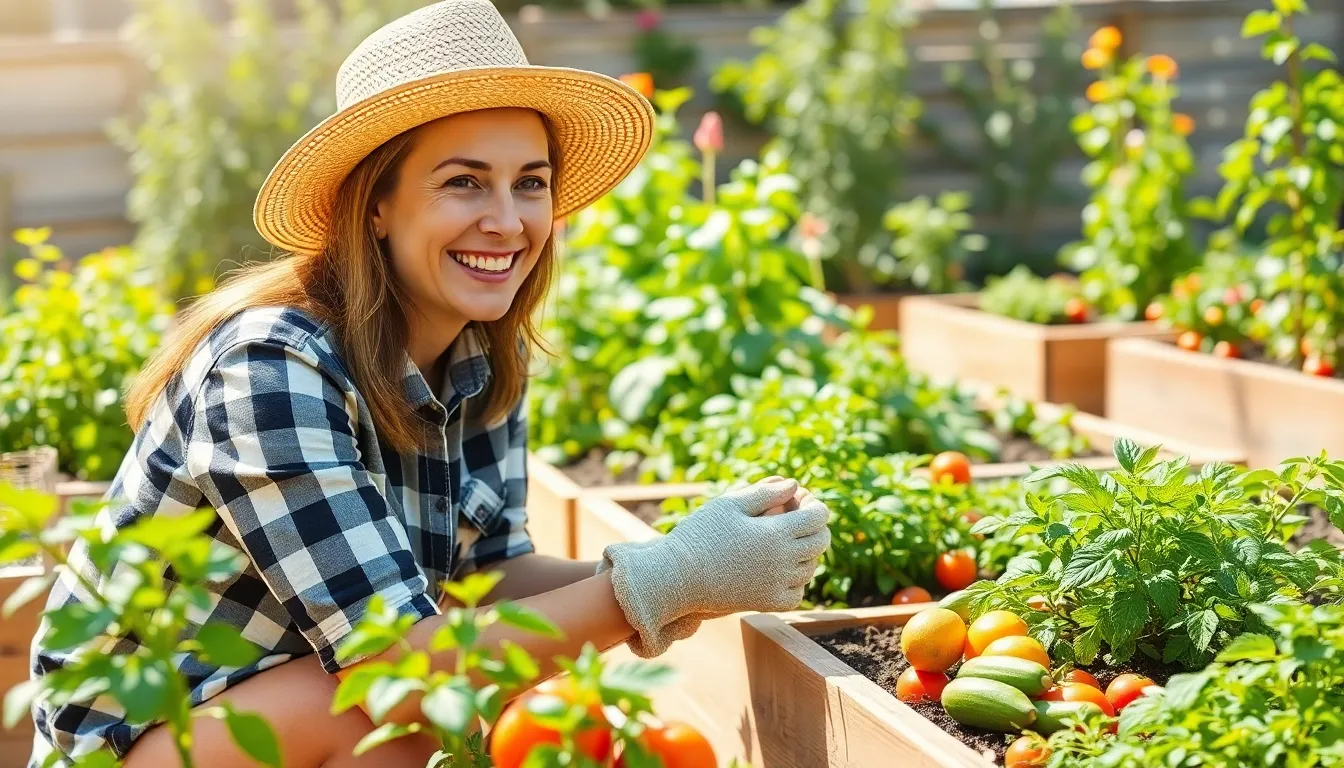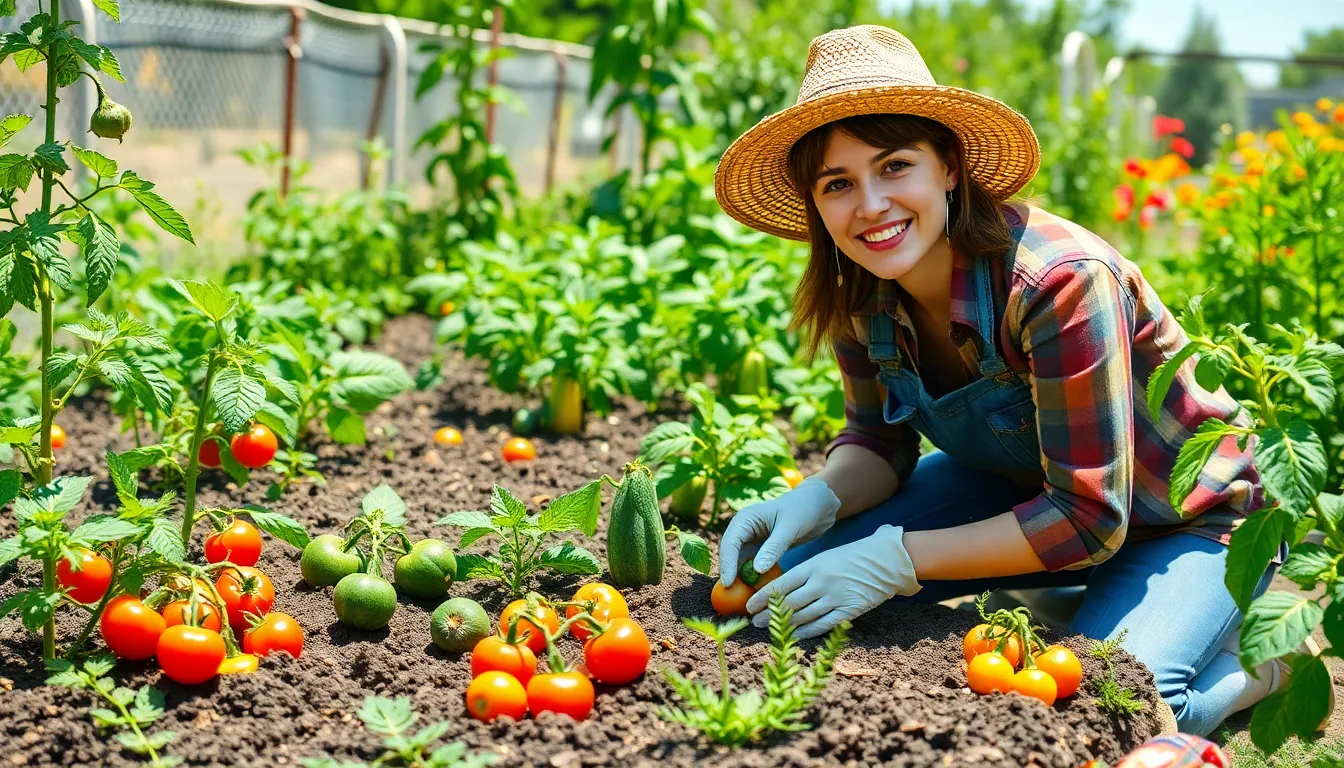The Best Fluffy Pancakes recipe you will fall in love with. Full of tips and tricks to help you make the best pancakes.

Small Vegetable Garden: Unlock Fresh Produce and Easy Gardening Hacks Today
Imagine stepping into your backyard and plucking fresh tomatoes, crisp cucumbers, and vibrant peppers right off the vine. A small vegetable garden isn’t just a hobby; it’s a ticket to culinary bliss and a secret weapon against overpriced grocery bills. Plus, who wouldn’t want to impress friends with their own homegrown produce?
Small Vegetable Garden
A small vegetable garden offers numerous advantages, enhancing both lifestyle and diet. Enjoying the harvest of fresh produce like tomatoes, cucumbers, and peppers contributes to overall well-being.
Fresh Produce At Your Fingertips
Harvesting fresh produce provides convenience and nutritional value. Growing vegetables allows for immediate access to ripe ingredients, promoting healthier meal options. With every gardening session, individuals experience the satisfaction of picking their own vegetables. This direct connection to food fosters an appreciation for freshness and flavor. Additionally, small gardens often yield organic options, reducing exposure to pesticides.
Space Efficiency
Small vegetable gardens maximize limited space while delivering significant results. Compact designs fit well in backyards, patios, or even balconies. They allow city dwellers to enjoy gardening without requiring extensive land. Container gardening, in particular, uses vertical space effectively, accommodating various plants. These gardens need less maintenance, making them ideal for busy individuals. By utilizing space efficiently, gardeners optimize their environment for productivity and enjoyment.
Planning Your Small Vegetable Garden

Planning a small vegetable garden involves careful consideration of several key elements. Gardeners should focus on location and vegetable selection for optimal results.
Choosing The Right Location
Light exposure plays a crucial role in plant growth. Select a spot that receives at least six hours of sunlight daily. Proximity to water simplifies irrigation efforts, ensuring easy access for watering needs. Assess the soil quality and drainage; well-drained soil fosters healthy root development. Also, consider proximity to the kitchen for convenience, making it easier to grab fresh ingredients while cooking.
Selecting Vegetables To Grow
Choosing vegetables hinges on personal preferences and local growing conditions. Begin with easy-to-grow options like tomatoes, cucumbers, and peppers. Select varieties that thrive in the regional climate and season. Consider the length of the growing season when deciding on crops, as some may require more time than others. Additionally, planning for staggered planting allows for continuous harvests throughout the growing season. Incorporate a mix of staple vegetables and unique varieties to diversify the garden’s yield and enhance the culinary experience.
Building Your Small Vegetable Garden
Creating a small vegetable garden involves thoughtful planning and execution. Selecting the right garden bed and preparing the soil sets the foundation for a successful harvest.
Garden Bed Options
Raised beds offer excellent drainage and improve soil warmth, making them ideal for many vegetables. Container gardens provide flexibility, allowing gardeners to move plants to catch sunlight or shelter them from harsh weather. In-ground beds benefit from established soil nutrition and promote deeper root growth for larger plants. Each option caters to different spaces and preferences, enabling individuals to optimize their gardening experience. Utilize vertical gardening techniques like trellising to maximize limited space and grow climbing vegetables, such as peas and beans.
Soil Preparation Techniques
Assessing soil quality involves testing its pH and nutrient levels, ensuring proper growth conditions. Enhancing soil richness can occur through organic matter additions like compost, which improves texture and retains moisture. Tilling the soil promotes aeration, helping roots access oxygen and nutrients. Incorporating mulch reduces weed growth and conserves moisture levels around plant bases. Creating raised beds or mounds can improve drainage, which benefits root vegetables like carrots and potatoes. Proper soil preparation contributes significantly to the vitality of a small vegetable garden.
Maintenance Tips For A Small Vegetable Garden
Maintaining a small vegetable garden requires consistent care and attention to detail. By following a few key practices, gardeners can ensure healthy growth and a bountiful harvest.
Watering Best Practices
Watering plays a vital role in the health of a vegetable garden. Regular watering occurs deeply and less frequently to encourage root growth. Aim for one inch of water per week, which includes rainfall. Morning is the best time for watering, as it allows plants to absorb moisture before the heat of the day. Using soaker hoses or drip irrigation systems conserves water and delivers it directly to the roots. Observe plants for signs of drought stress, like drooping leaves. Plants may also require more water during hot spells or if grown in containers, so adjustments should be made accordingly.
Pest Management Strategies
Managing pests effectively safeguards the vegetable garden’s yield. Regular inspection for signs of pests or diseases helps catch issues early. Encourage beneficial insects like ladybugs, which control aphid populations. Implementing crop rotation disrupts pest life cycles and promotes soil health. Using row covers can protect young plants from pests while allowing light and moisture to reach them. Organic pesticides, such as neem oil, offer gentle alternatives when populations become problematic. Developing companion planting strategies, such as pairing marigolds with other vegetables, deters pests naturally. Attention to these practices fosters a thriving garden ecosystem.
Conclusion
Creating a small vegetable garden offers countless rewards that extend beyond just growing food. It cultivates a sense of accomplishment and connection to nature while promoting healthier eating habits. With the right planning and care anyone can transform limited space into a thriving garden filled with fresh produce.
Embracing the simplicity of gardening not only enhances culinary experiences but also contributes to a more sustainable lifestyle. As gardeners nurture their plants they gain invaluable knowledge about the growing process and the importance of fresh ingredients. This journey fosters a deeper appreciation for the food they consume and the environment around them.
